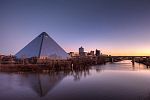It seems to me that one of the trademarks I've noticed is that Piper seems to place their twin engines well forward on the wings thereby blocking some of the view from the cockpit.
Not as bad as from say Cessna or the others. Wonder what the rationale was for engine placement on the wings so far forward?





 Reply With Quote
Reply With Quote





Bookmarks